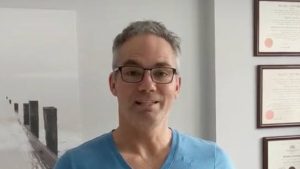Back pain & Osteopathy
Case history
An electrician consults for pain in the dorsolumbar region, along the twelfth rib and the left iliac crest. The ailments have been going on for six weeks. He has had similar pains before that were easily resolved, but this time the pain persists and moves to the front of the left thigh.
In our questionnaire, we learned this:
– A fall on the feet of a scaffolding last winter that caused pain in the lumbar region that was treated in physiotherapy with little success;
– Severe bronchitis in November 2011;
– Repeated pain in the dorsolumbar region for several years;
– Occasional left-sided sciatica due to disc protrusion at the L4-L5 lumbar vertebrae, which started in 2003, which was relieved with physiotherapy;
– Stress that is associated with her work and family life;
– Inconsistent left knee pain for a few months.
During our objective assessment we became aware of the following problems:
– Compaction in the L5/S1 vertebrae;
– Reduced mobility of the sacrum;
– Rigidity of the dorsolumbar hinge;
– Reduced mobility of the left dome of the diaphragm;
– The pillars of the diaphragm are reduced;
– A marked spasm of the psoas;
– A tense left posterior and inferior cul-de-sac;
– Second degree ptosis of the left kidney and first degree of the right kidney;
– Compaction of the occiput on C1.
What is the primary objective of osteopathy?
In osteopathy, the primary objective is to help the body heal itself. In our particular case, some compressions were perceived at the craniocervical (occiput and C1) and lumbosacral (L5-S1) levels, probably due to the fall of the scaffold. Manipulations aimed at increasing the mobility of these regions are performed in order to restore the optimal craniosacral rhythm, the mobility of the dura mater, the sacrum and the occiput.
Also, since the kidneys use the diaphragmatic pillars and the psoas to perform their movements and we have detected problems at this level, it is important to treat them. Left kidney ptosis is aphysiologic and contributes directly to pain and tension in the dorsolumbar region, as well as pain in the 12th rib and anterior aspect of the left thigh. The ptosis is attributable to the frequent coughing during the episode of bronchitis and also, to the fall of the scaffold. In addition, the cul-de-sac dysfunction also seems to affect the diaphragm and the tension in the dorsolumbar junction, psoas and left kidney caused by last November’s bronchitis.
It is important to treat all these structures even if the back pain was already present, as these factors seem to slow down the normal healing process. This man is also taught psoas stretching exercises to maintain good hip and lumbar spine mobility.






